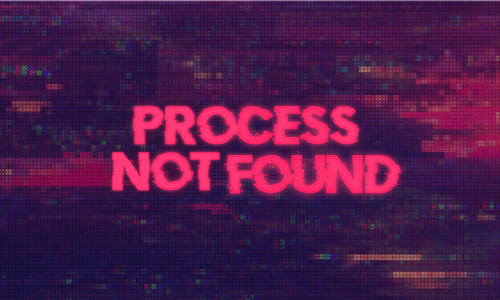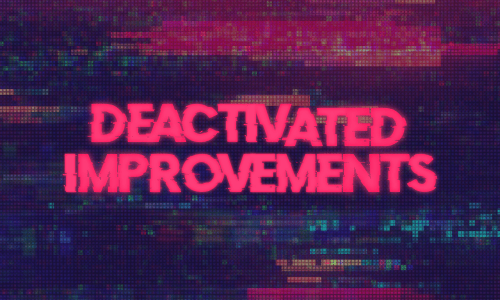Top 5 reasons why leads for your chemicals don't convert into sales
“Why are my leads not converting into sales?” This question is certainly as old as the battle between sales and marketing departments.
The typical scenario that we see at our clients, the chemical and material suppliers, is marketing team complains that sales people are not following-up on leads. On the other side, the sales people argue that poor quality marketing leads are a waste of their time. And this war continues unabated.
Over many years managing our clients’ digital programs, we have identified five recurring mistakes that negatively impact lead conversion at chemical suppliers.
In this article, you will get best practices and practical advice tailored for the specialty chemical industry to help you put an end to this historical marketing and sales fight.
#1 Reason: Unclear and different definitions

In general, there is no mutual agreement among the sales and marketing teams to “what defines a potential customer”. In fact, we can say the same about the other stages of the lead conversion funnel.
From lead to customer, we usually see that every department — and even individuals in the worst case — has a different and unique definition of each stage.
Try this: Ask your sales and marketing colleagues “what is a lead”. The answers will give you an idea about how deep the discrepancies are within your company. And this is not a tiny thing! This may certainly be the number one reason why your lead conversion is ineffective.
Working together in the same framework is crucial as each stage of your lead conversion funnel needs to have a clear meaning and calls for specific actions.
Our first recommendation is to ensure that everyone shares the same definitions across your company, and most importantly, be understood among your organization.
We use the following stages at SpecialChem:
- Visitor: an unknown person visiting your content and webpages.
- Lead: a known visitor who shared at least an email address and a name.
- Marketing Qualified Lead (MQL): a lead in your target that showed an interest in your solutions and company.
- Sales Qualified Lead (SQL): an MQL that is further qualified to assess a buyer persona match and the existence of an active project.
- Opportunity: an SQL that is determined as “in-target” and “in-project” after your qualification.
- Project: An opportunity in which both parties invested a significant amount of resources to develop a new product or prototype.
- Customer: Well… do you really need an explanation?
Fun Fact: A few years ago. we were generating Opportunities for a leading polymers supplier, through a large digital marketing program that included Leads Qualification and Opportunities Funnel Management. After a few months, the conversion rate from Opportunities to Projects was disappointing. A closer look into their process revealed that they imported the Opportunities into their CRM system as leads, and with this “lead” definition, no one was taking the lead in following-up to convert to projects.
#2 Reason: No qualification process

If you do not qualify your MQL into SQL before dispatching them for follow-up, you jeopardize your conversion right from the start.
We still see a bad habit at specialty chemical suppliers to send all the leads to their sales representatives.
Back in the day, Sales were responsible for generating leads to close new business, and marketing was only responsible for the branding and communication. This old way of thinking leads to the idea that a lead is a business opportunity, but a lot has changed since the digital bubble burst.
Today, not all your leads are the same. From a visit to your content by mistake to a person requesting a sample, the level of engagement of your lead can significantly vary. Lead scoring and lead qualification are key processes to screen and filter the most valuable and engaged leads among your list.
Plus, when sending a list of leads to your sales team, the priority they will place on following up on these leads is typically very, very low.
They are busy managing current buying customers, making offers, closing deals, etc. At best, they will contact the leads from companies they know, and respond to the requests for sample or a technical contact. For the others, they might shoot off an intro email that gets no response and take no further action. But, they will take this actions only when they have the time. It can be in a week or in a month. Would you consider working with a supplier that answers your request a week after you make it? Probably not!
#3 Reason: No accountable organization

When there is no lead conversion process, there is no need for a dedicated organization. That’s the direct consequence of Reason #2.
Your lead conversion process must be mapped, and responsibilities assigned: what, who, when, where, why.
To set up an effective organization, you can split roles and responsibilities for each part of your lead conversion funnel:
- Marketers: Generate leads / TOFU
- Inside Sales: Qualify MQL into SQL (some of which will be opportunities) / MOFU
- Sales: Manage opportunities / BOFU
- Process Manager: Manage the organization, monitor and improve the process.
A common mistake is to consider that a sophisticated CRM can replace your lead conversion process. CRMs are great but they do not replace a defined “role and association action” process like the one above – they just make it easier to track the status of lead or opportunity stage.
#4 Reason: No KPIs for your lead conversion process

“My leads don’t convert into sales!” That’s what we have been hearing from hundreds of Sales, Marketing, and Business Directors. This statement means everything and nothing at the same time!
Is the problem the leads? The conversion process? Or what comes out of the process?
In most cases, the person or people making this complaint can’t explain why because they lack reliable indicators.
To monitor your lead conversion, we recommend to pay attention to these three KPIs:
- Quantity: number of leads at each stage of your funnel (TOFU, MOFU, BOFU)
- Conversion Rate: the percentage of your leads that pass from one stage to the next
- Time to Convert: the average time to pass from one stage to the next
#5 Reason: No learning or improvement of the process

We can only improve what we measure. This famous idiom makes perfect sense if you want to improve your lead conversion.
Measure the right KPIs
Having the right KPIs will help you identify the bottlenecks in your process in order to take corrective actions:
- Quantity: Do you have enough leads at each stage of your funnel? Do you need to generate more leads at the top of your funnel?
- Conversion Rate: Do you collect all necessary information before passing your leads to the next stage? Are you too strict or too loose in your criteria?
- Time to convert: What stage or action is slowing your process down? How can you make them more effective? How fast do you sample? How quickly do prospects test? How long after a positive test do they buy? With a well-oiled machine, you can even analyze if one market/application area converts faster than another!
Analyze your conversion rate
Analyze your conversion rate with caution. It is all too easy to only see what we want to see. For example:
Too high conversion rate: “Look how good we are!” Not so fast:
- Too loose criteria at one stage make it ineffective.
- Too strict criteria at one stage can make the following useless.
Too low conversion rate: “What comes out is only real business.” Hmmm, not so sure:
- Too strict criteria can prevent many leads from passing to the next stage. Be careful not to deprive yourself of valuable leads that are killed too early.
- You rush your leads down to the next stage. Make sure that you have collected all the necessary information and that it is the right time to move them into the next stage. Like the too-high conversion above, every move you make impact the stage below it!
Track your benchmark
“Do you have benchmarks?” This is a question asked by most if not all of our clients.
Of course, we do have typical benchmarks we can share. But in reality, the only benchmark that matters is your own! Benchmark where you are starting and measure where you are at defined periods once you implement the tips we have shared with you. Your products, your markets, and your buyer personas are unique to you, and your time to convert from an opportunity to a sale is unique to you. Benchmark it. Measure it. Improve it.
Would you dare to offer the same improvement advice to a beginner in a sport and a seasoned athlete? Of course not. Different topic, same logic.
Building an effective lead conversion process is not rocket science but it may seem complex and feel overwhelming at first. You just need to take it one step at a time. This is what we have been advising and implementing lead conversion process for chemical suppliers for more than 20 years.
Progress at your own pace. Gather your teams, share common definitions, define responsibilities, and don’t forget to measure and improve each part of your process over time.